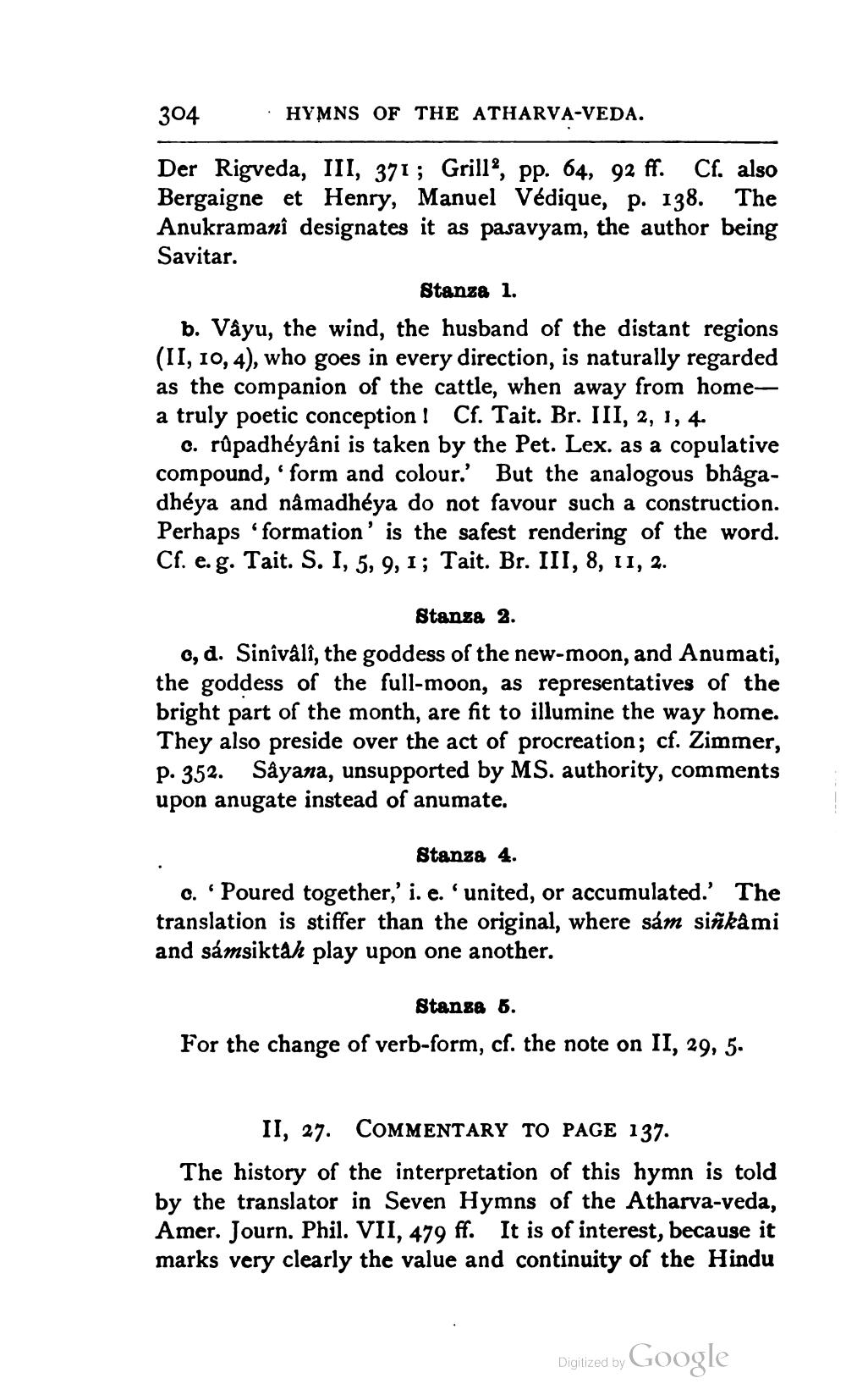________________
304
• HYMNS OF THE ATHARVA-VEDA.
Der Rigveda, III, 371; Grill?, pp. 64, 92 ff. Cf. also Bergaigne et Henry, Manuel Védique, p. 138. The Anukramani designates it as pasavyam, the author being Savitar.
Stanza 1. b. Vayu, the wind, the husband of the distant regions (II, 10, 4), who goes in every direction, is naturally regarded as the companion of the cattle, when away from homea truly poetic conception! Cf. Tait. Br. III, 2, 1, 4.
c. rûpadhéyâni is taken by the Pet. Lex. as a copulative compound, 'form and colour.' But the analogous bhagadhéya and nâmadhéya do not favour such a construction. Perhaps 'formation' is the safest rendering of the word. Cf. e. g. Tait. S. I, 5, 9, 1; Tait. Br. III, 8, 11, 2.
Stanza 2. 0, d. Sinivali, the goddess of the new-moon, and Anumati, the goddess of the full-moon, as representatives of the bright part of the month, are fit to illumine the way home. They also preside over the act of procreation; cf. Zimmer, P. 352. Såyana, unsupported by MS. authority, comments upon anugate instead of anumate.
Stanza 4. c. Poured together,' i. e. 'united, or accumulated. The translation is stiffer than the original, where sám siñkami and sámsiktah play upon one another.
Stanga 6. For the change of verb-form, cf. the note on II, 29, 5.
II, 27. COMMENTARY TO PAGE 137 The history of the interpretation of this hymn is told by the translator in Seven Hymns of the Atharva-veda, Amer. Journ. Phil. VII, 479 ff. It is of interest, because it marks very clearly the value and continuity of the Hindu
Digitized by Google




